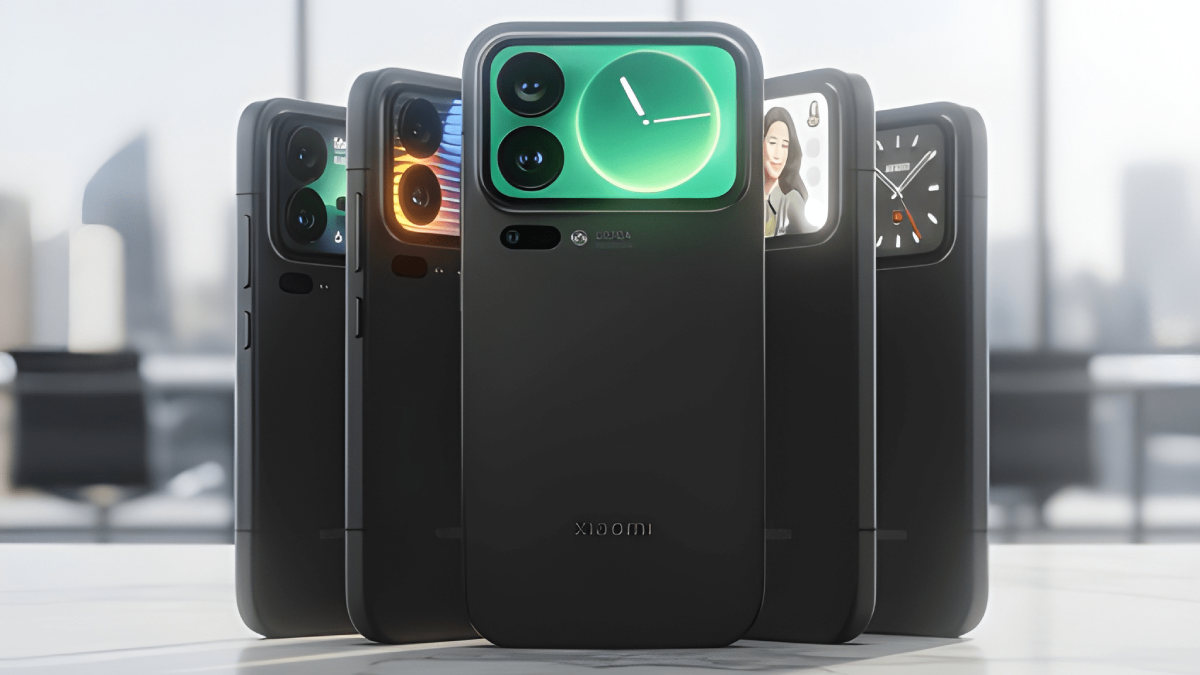What’s Inside
In a move that’s sure to turn heads in the smartphone world, Xiaomi is teasing a fresh twist on flagship design with its next big release. The star of the show? A built-in secondary screen on the back of the device, designed to make everyday interactions smoother and more intuitive. This isn’t your average notification light—it’s a full-fledged display that could change how we glance at our phones without flipping them over.
Drawing from recent leaks and official hints, the upcoming model skips ahead in numbering to align with major competitors, signaling Xiaomi’s confidence in shaking up the premium market. Enthusiasts have been buzzing about this feature since the first glimpses surfaced, and it promises to blend practicality with a dash of futuristic flair.
Unpacking the Magic Back Screen: What Makes the Xiaomi 17 Pro Rear Display Tick
At the heart of this innovation is the aptly named Magic Back Screen, nestled right into the phone’s prominent camera module. This secondary panel isn’t just for show—it’s a vibrant, high-res color display capable of handling a variety of quick-access tasks. Imagine checking the time, peeking at weather updates, or even controlling music playback without unlocking your device.
The dual-camera array surrounding it suggests top-tier photography chops, potentially pairing with advanced sensors for pro-level results. And since it’s integrated into the back panel, the overall design stays sleek, avoiding the bulk of add-on accessories.
Why Xiaomi’s Skipping Ahead: Aiming to Rival the Big Leagues
The decision to leap from the previous series directly to the 17 lineup isn’t random—it’s a cheeky nod to matching paces with industry giants. By fast-tracking this release, Xiaomi positions its flagship as a direct alternative in the high-stakes race for 2025’s top spots. The addition of the Xiaomi 17 Pro rear display elevates it beyond standard specs, offering a unique selling point that emphasizes user convenience over sheer power.
Both the standard model and its larger sibling share this feature, ensuring broad appeal across the series. As teased on social platforms, the screen occupies a thoughtful portion of the rear, balancing aesthetics with functionality—much like how compact foldables use their outer panels.
Launch Buzz: When Can You Get Your Hands on It?
Excitement is building as Xiaomi gears up for a packed unveiling this month. Alongside the Pro series, expect the global debut of mid-range options that round out the portfolio, giving buyers choices at various price points. Production ramps suggest availability soon after the event, with early adopters likely snapping them up for the novelty alone.
In a market flooded with incremental upgrades, the Xiaomi 17 Pro rear display feels like a breath of fresh air, proving that sometimes, the best ideas come from rethinking the basics. If it delivers on the hype, this could be the feature that tips the scales for many shoppers.
Also Read: Google Moves Android Development Internal Pipeline — What Developers Must Know
FAQs
What is the main feature of the Xiaomi 17 Pro rear display?
The Xiaomi 17 Pro rear display, known as the Magic Back Screen, offers a high-definition secondary panel for displaying time, weather, notifications, and serving as a selfie viewfinder.
Which models include the Xiaomi 17 Pro rear display technology?
Both the Xiaomi 17 Pro and the Xiaomi 17 Pro Max incorporate the innovative rear display for enhanced everyday usability.
When is the launch expected for devices with the Xiaomi 17 Pro rear display?
The Xiaomi 17 Pro series, featuring the rear display, is set to launch globally this month, alongside other Xiaomi models.
How does the Xiaomi 17 Pro rear display improve selfies?
It functions as a rear-facing viewfinder, allowing users to see themselves clearly for better-angled shots without relying on the front camera.
Why did Xiaomi skip to the 17 series for this rear display debut?
The numbering jump aligns the release with major competitors, positioning the Xiaomi 17 Pro rear display as a fresh rival in the premium segment.

